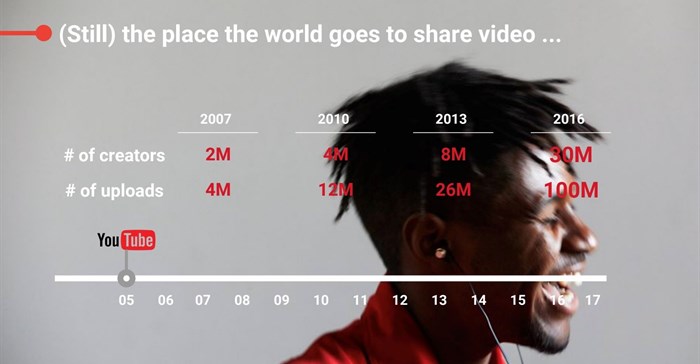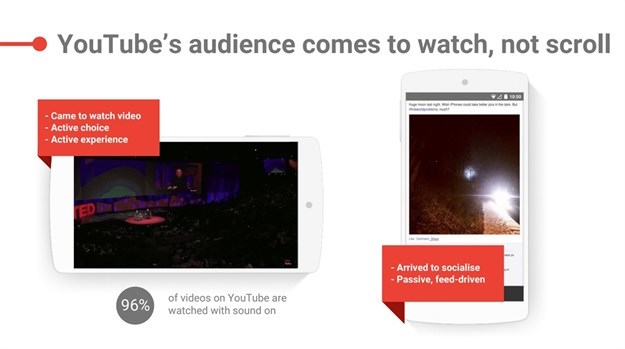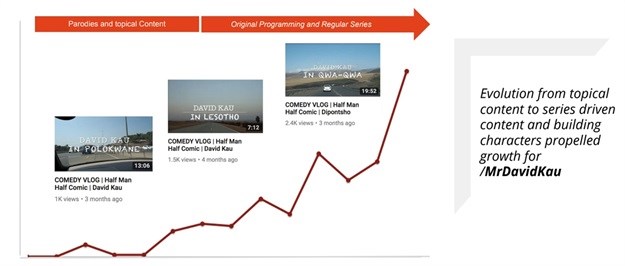
I encourage brands to build a YouTube presence now, to begin producing content that is relevant and consumable and to avoid the shotgun approach of gaining eyeballs alone. It is expensive and as the consumer gets bombarded with more and more information, if you can have a tight relationship with them in your community, they become a lot more valuable to you as a company in the long run.
In the marketing world, video is dominating strategy sessions and brand meetings - brands realise the importance and are keen to explore the space. However, many brands are still very reluctant to make the shift from social media platforms like Facebook and Instagram to YouTube because they are worried about getting the reach that they seemingly get quite easily on other platforms. Let’s face it, ‘The Money’ upstairs want to see numbers and marketers are having to pull out all of the stops to ensure they get the numbers to justify the spend. Trying to get the bosses to understand that one engaged viewer is more important than 10 eye-balls is proving difficult. It seems as though the traditional mindset that ‘TV has more eye-balls” has crept its way into the digital landscape where engagement and community should trump this old-school approach of passive consumption.
Marketing is about driving consumers and delivering brand messaging. I am not too sure if you are aware of how TV shows in South Africa determine their viewership? There is a select target audience who are chosen based on the demographics of the country, these few thousand people get a black box attached to their TV that monitors their consumption. That information is used to extrapolate what the rest of the population (around 56 million) are consuming. It isn’t very accurate and there is no clear way to determine whether a particular individual went to the loo during your ad, whether they liked it or not and there is certainly no way for them to engage with your content directly.
Social media brought down all of those barriers and allowed brands to get real-time data on how well a campaign did, who watched it, for how long and whether or not they liked it. It’s almost as though in the TV era, brands and broadcasters lived in a land of illusion – assuming numbers and tracking success by items sold. This is why in the age of social media big data is so exciting.
Facebook was one such platform where you could see all your friend’s posts chronologically and it made life easier. Facebook then changed its algorithms to try and ensure that you only receive content that interests you, limiting brands in their ability to broadcast to their entire following and brands have had to set aside budgets to ensure that their content is being seen through boosted posts.
In the digital video era, Facebook counts a view if you watch for 3 seconds or more. I could have just been scrolling passed but the brand that released the video got a good view out of me even though I saw nothing, I didn’t engage or even care about the piece of content if I reflect on it. This is the eye-balls approach. How many views and likes can I get on a particular piece of content? Something to consider is that YouTube only counts a view after 30 seconds of watching.

I don’t believe it to be very sustainable at all. The more platforms follow in Facebook’s footsteps, the more difficult it is going to become to really engage your target market and convert them into consumers. I suggest that all brands look towards a long-term video strategy over this eye-balls approach of trying to get maximum views right not. Quality over quantity. YouTube is such a platform that isn’t limiting you in terms of your audience and because it is solely video, it allows you to organise your content cleverly for a long-term community building strategy.
A long-term video strategy is all about community building. There are three stages of building an audience; attract the viewer, keep the viewer and turn that viewer into a fanatic.
You attract a viewer by creating engaging content that appeals to them. You grab my attention with some innovative ideas and a friend shares it which then gets me to click on to your platform and get excited by what you are doing as a brand. Content is king in that space. Set a vision for your USP, know your market and produce content to feed that market. Don’t forget to optimise it correctly for organic reach – SEO for YouTube.
You keep a viewer by producing regularly and engaging directly with the viewer – ensuring that they feel as though they are part of your community. The more regularly you produce your content, the more the viewer comes back for more as it helps them build habits of consumption around your content. The more consistent you are, the more likely the viewer will come back because they trust that every particular day at a particular time your content will be published and as humans we LOVE routine. We love to see what David Kau is doing on his channel – creating a series that happen regularly to keep the audiences engaged.

You turn a viewer into a fanatic by engaging them directly. You mention them by name in your content, you involve them in your content ideas, you adjust your strategies according to their suggestions, you reply to their comments, you sell them merchandise and you host events. You inevitably build a community of viewers who will share and like your content and become mini-influencers for your content thereby broadening your reach. They will share every video, speak about you to their friends, engage with you and watch all your content over and over again. Is that not a much more powerful consumer than someone who is watching simply to wait for your content to end so they can return to what they actually came to consume?
